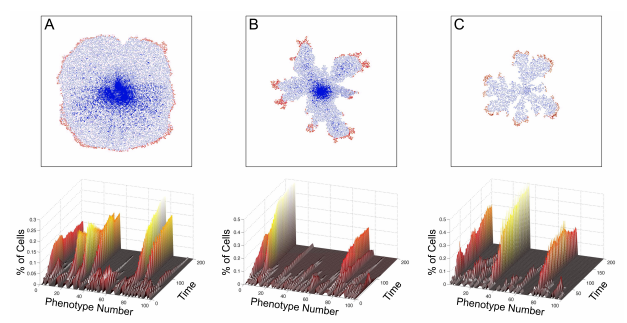- It’s Time to Talk about the Burgeoning Robot Middle Class
How will a mass influx of robots affect human employment?
In the book Race Against the Machine, Erik Brynjolfsson and Andrew McAfee of MIT’s Sloan School of Management present a chart showing U.S. productivity, GDP, employment, and income from 1953 to 2011. The chart looks as you would expect from 1953 until the mid-1980s, with every one of the measures rising together: employees work more productively, companies make more money, and more hires occur as the middle class swells.
- Game Theory and the Treatment of Cancer
- China Comes to Silicon Valley at One Startup Accelerator
A year after launch, a startup program is helping U.S. companies reach China—and vice versa.
When Jon Bonanno, chief commercial officer of the clean-tech startup Empower Micro Systems, got up to face a small, packed room in Santa Clara, California, last week, it wasn’t like the polished “demo days” run by the highest-profile Silicon Valley startup accelerators. There was no stage, not even a screen for the projector. The sound system buzzed with painful feedback. The 100 or so guests stood or sat in folding chairs under bright fluorescent lights in a space adjoining a large startup workplace that contained a distinct no-no of Silicon Valley office culture: cubicles.
- Sharper Computer Models Clear the Way for More Wind Power
New prediction models can allow utilities to rely more heavily on wind and save millions.
The utility with the most wind power capacity in the United States, Xcel Energy, is relying more on this power source and saving millions of dollars thanks to new forecasting models similar to those used to predict climate change.
- A More Efficient Jet Engine Is Made from Lighter Parts, Some 3-D Printed
Composite and 3-D-printed components will mean jet engines that use 15 percent less fuel.
A new generation of engines being developed by the world’s largest jet engine maker, CFM (a partnership between GE and Snecma of France), will allow aircraft to use about 15 percent less fuel—enough to save about $1 million per year per airplane and significantly reduce carbon emissions.
Digest powered by RSS Digest


